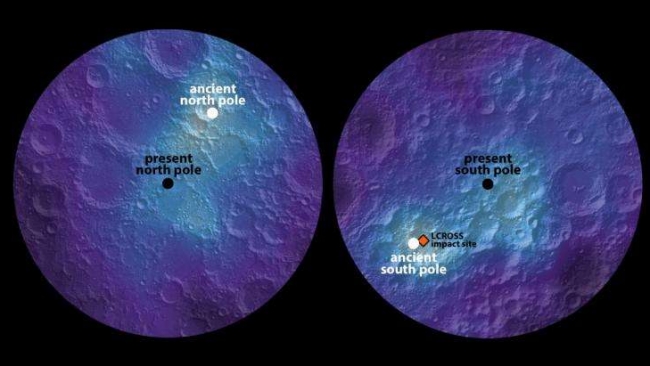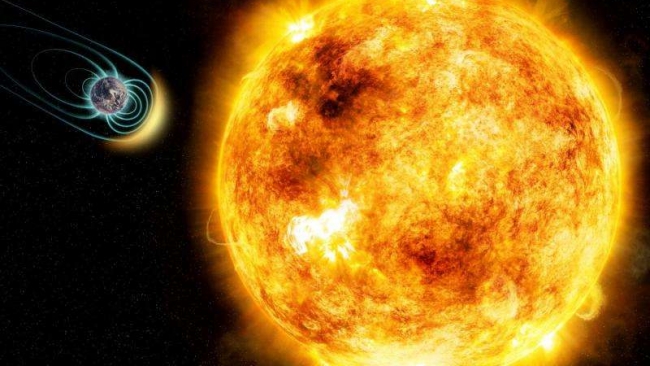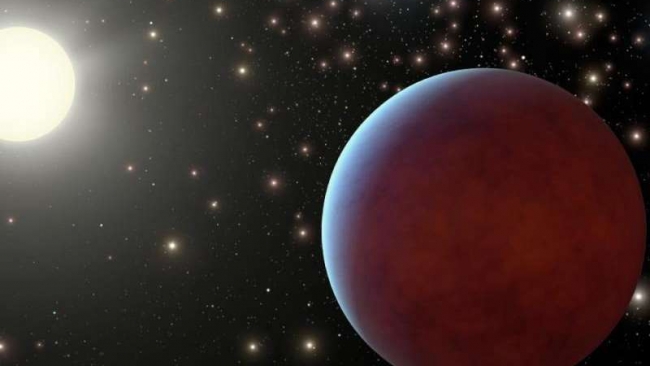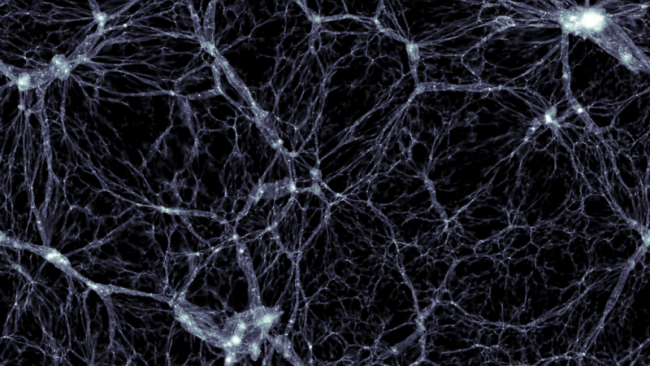Earth's moon wandered off axis billions of years ago, study finds

A new study published today in Nature reports discovery of a rare event—that Earth's moon slowly moved from its original axis roughly 3 billion years ago.
Planetary scientist Matt Siegler at Southern Methodist University, Dallas, and colleagues made the discovery while examining NASA data known to indicate lunar polar hydrogen. The hydrogen, detected by orbital instruments, is presumed to be in the form of ice hidden from the sun in craters surrounding the moon's north and south poles. Exposure to direct sunlight causes ice to boil off into space, so this ice—perhaps billions of years old—is a very sensitive marker of the moon's past orientation.
An odd offset of the ice from the moon's current north and south poles was a tell-tale indicator to Siegler and prompted him to assemble a team of experts to take a closer look at the data from NASA's Lunar Prospector and Lunar Reconnaissance Orbiter missions. Statistical analysis and modeling revealed the ice is offset at each pole by the same distance, but in exactly opposite directions.
This precise opposition indicates the moon's axis—the imaginary pole that runs north to south through it's middle, and around which the moon rotates—shifted at least six degrees, likely over the course of 1 billion years, said Siegler.
"This was such a surprising discovery. We tend to think that objects in the sky have always been the way we view them, but in this case the face that is so familiar to us—the Man on the Moon—changed," said Siegler, who also is a scientist at the Planetary Science Institute, Tucson, Ariz.
"Billions of years ago, heating within the Moon's interior caused the face we see to shift upward as the pole physically changed positions," he said. "It would be as if Earth's axis relocated from Antarctica to Australia. As the pole moved, the Man on the Moon turned his nose up at the Earth."
The discovery is reported today in an article in the scientific journal Nature, "Lunar true polar wander inferred from polar hydrogen." Siegler's primary co-authors are astrophysicist Richard S. Miller, a professor at the University of Alabama Huntsville, and planetary dynamicist James T. Keane, a graduate student at the University of Arizona.
Source: Phys.org
Thu 24 Mar 2016 at 08:12





